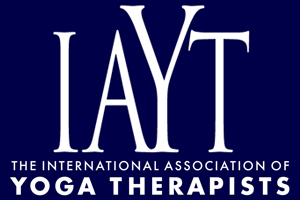Effect of Therapeutic Yoga on Balance and the Ability to Transfer from the Floor in an Older Adult Population
The purpose of this study was to determine if a therapeutic Yoga program could improve the ability of older adults to transfer from the floor. The study also examined how balance, quadriceps strength, and ankle flexibility influence transfer ability in older adults.
Design: A single group interrupted time-series design with two pre- and one post- collection periods. Initial assessment was conducted approximately one month prior to the intervention. Pre-assessment was conducted one week prior to the intervention. Post-assessment was conducted immediately following the intervention.
Setting: Yoga training group classes were held at a Yoga center in Richmond, Virginia. Additional practice was performed in the participants' homes. Pre- and post-assessments were performed in a physical therapy office at the Yoga center.
Participants: Fifty older adults, age range 58 to 83 years, most of whom were new to Yoga. A total of 45 participants completed the program.
Intervention: A 13-week therapeutic Hatha Yoga program specifically tailored to older adults and designed to strengthen the quadriceps, increase ankle flexibility and balance, and improve the ability to transfer to and from the floor. Participants attended one 90-minute Yoga class per week and were asked to complete a 30-minute guided home practice, using a video, five days per week.
Outcome Measures: Assessment of balance using the Berg Balance Scale, quadriceps strength using a dynamometer, ankle dorsiflexion using a goniometer, ability to transfer from the floor using a Transfer Ability Scale, and self-ratings of perceived fitness and transfer difficulty.
Results: Improvement was noted across all measures. Specifically, a paired sample t-test revealed significant improvement in participants' ability to transfer from the floor (t = 11.25, p <. 001) with a large magnitude of effect (d = 1.36). These improvements were reflected by participants' own perception of their transfer ability and general level of fitness. A series of nested regression models revealed balance and quadriceps strength to be the largest contributors to transfer ability.
Further Investigation: Future research should focus on the relationship between floor transfer ability and decreasing the number of falls in older adults.
